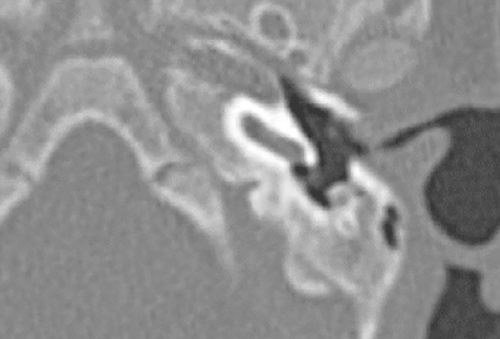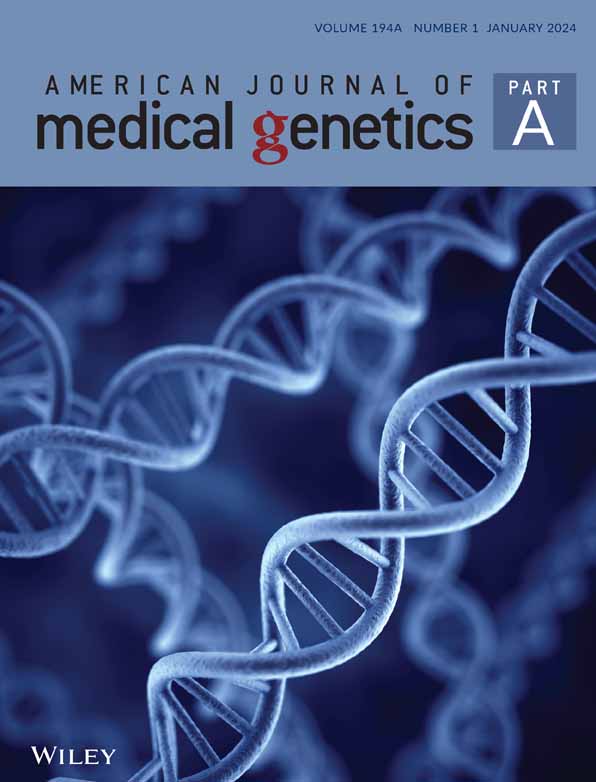In This Issue
GROWTH CHARTS COMPILED FOR DYRK1A SYNDROME
DYRK1A Syndrome, also known as MRD7 (MIM #614104), is a rare condition caused by heterozygous pathogenic variants in DYRK1A, which encodes a protein involved in brain development. To date, more than 90 patients with this syndrome have been reported. Primary characteristics of DYRK1A Syndrome are intellectual disability, autism, dysmorphic features, epilepsy, and feeding difficulties. Growth retardation has been reported in approximately one-third of these individuals.
Lanvin et al (p. 9, 10.1002/ajmg.a.63412) compiled growth charts for patients with DYRK1A Syndrome based on anthropometric measurements, using data collected from a cohort of 92 patients (43 girls and 49 boys). Growth charts for height, weight, body mass index, and occipitofrontal circumference (OFC) were generated, and growth curves included height, weight, and OFC measurements for patients aged 0-5 years of age. The charts showed that individuals are more likely to present with intrauterine growth restriction with low birth weight and microcephaly, while the majority also showed postnatal growth retardation at the last examination, regardless of sex. At 5 years old, mean height was -1.5 standard deviation (SD) and mean weight was -1.2 SD for males, and similar for females (-1.2 SD and -1.4 SD). Significant microcephaly was noted at 5 years old.
“These specific DYRK1A Syndrome growth charts could be used as new tools to improve care in individuals with DYRK1A Syndrome up to 5 years,” write the authors.
DELAYS IN ADAPTIVE SKILLS IN CHILDREN WITH BARDET-BIEDL SYNDROME
Bardet-Biedl syndrome (BBS) is a rare autosomal, recessive ciliopathy that impacts multiple body systems. To date, 27 BBS genes have been identified, with most cases involving BBS1 and BBS10. Characteristics of the syndrome include polydactyly, retinal degeneration resulting in progressive visual impairment, obesity, renal and genital abnormalities, and developmental and cognitive delays. Although developmental delays are generally recognized as a feature of BBS, very little information is available about the degree and specific characteristics of these delays. Previous research looking at adaptive functioning in this population exists, but no studies have looked at individuals aged 5 years and under.
Keifer et al (p. 31, 10.1002/ajmg.a.63391) now describe the achievement of 10 developmental milestones in children with BBS and characterize early adaptive skills in children < 5 years of age. Data were obtained from retrospective responses by caregivers enrolled in the Clinical Registry Investigating Bardet-Biedl syndrome, a natural history registry acquiring serial observations. Early adaptive skills were measured using the Adaptive Behavior Assessment System (ABAS-II 0-5) completed by caregivers. Overall, there were 652 individuals with milestone information, and 101 individuals (including 95 among the 652) with ABAS-II information.
The results showed wide-ranging delays in adaptive skills, particularly in the domain of Self-Care, and expressive language appeared to be the most frequently delayed developmental milestone. There were also differences by BBS genotype, as individuals with BBS1 had higher adaptive/developmental scores than people with BBS10.
HEARING LOSS COMMON IN TRISOMY 18
Trisomy 18 is the second most common autosomal aneuploidy. Most patients with this disorder present with a wide range of systemic organ complications, including congenital heart, gastrointestinal, urologic, and central nervous system diseases, which lead to high mortality and morbidity. Treatment advances have improved outcomes, but long-term survivors with trisomy 18 have severe developmental delays.
Auditory function is one of the most important factors in intellectual development, and individuals with chromosomal disorders are at high risk for hearing impairment. However, information regarding the prevalence, severity, and type of hearing impairment of patients with trisomy 18 is very limited.
Over a 7-year period, Tamaki et al (p. 107, 10.1002/ajmg.a.63358) assessed hearing screening and audiological evaluation in 22 patients with trisomy 18 who were admitted to a neonatal intensive care unit at a single center. Of the 19 patients who failed screening, 14 subsequently underwent otolaryngological examination and electrophysiological testing for further audiological evaluation. All patients in this subset had external auditory canal atresia or stenosis on otolaryngological examination. Auditory brainstem response and automated steady state response testing revealed that the severity of hearing impairment was moderate (n = 1), moderately severe (n = 7), severe (n = 3), and profound (n = 3). Eight patients received hearing aids at median 1.6 years of age.
“This is the first report to focus on the prevalence and characteristics of hearing impairment in patients with trisomy 18,” write the authors. “Further studies are needed to evaluate the effects of hearing aid use along with appropriate audiological evaluations on the communication skills and quality of life of patients with trisomy 18.”





